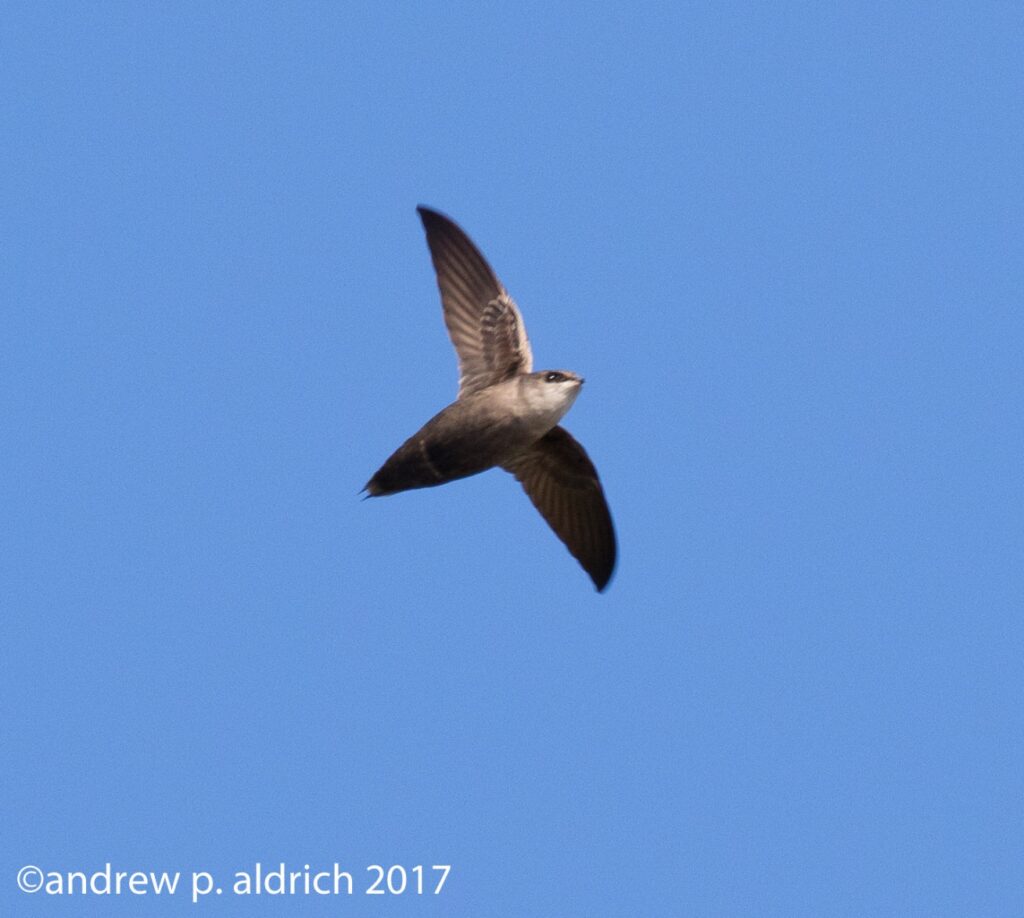Nesting and Roosting Site at the For All Forever Preserve

Chimney Swifts (Chaetura pelagica) are small, fast-flying swifts, often dubbed “flying cigars.” They are entertaining aerial acrobats, known for their unique nesting habits and remarkable adaptability to urban environments. The birds are native to North America and play a vital role in controlling insect populations through their voracious appetite for airborne insects.
Chimney Swifts are sooty-grey, often appearing black, with a short bill and a stubby tail. Their long wings beat so rapidly they can even look like a bat! They are a medium-sized swift, measuring 5.25“ long, with a 12” wingspan. The sexes are identical in plumage, though males average slightly heavier than females.
Habitat and Behavior:
In general, it is a diurnal feeder which remains active into early evening. They spend most of the day in flight, foraging insects in the sky over any kind of terrain, and only come down at night when roosting. Chimney Swifts fly rapidly with nearly constant wingbeats and often twist from side to side and bank erratically. They often give a high, chattering call while they fly.

Chimney Swifts are incapable of perching on flat surfaces. Their spiny tails and adapted feet are used to cling to and navigate on vertical surfaces, such as chimney walls. They drink on the wing, skimming the surface of the water with their beak. To bathe they glide above the surface of a body of water, briefly smacking their breast into the water, then flying off again, shaking their feathers as they go.
The chimney swift is a social species and is seldom seen alone. They generally hunt in groups of two or three and migrate in loose flocks of 6–20. In August-September, once the breeding season is over, they sleep in huge communal roosts of hundreds or thousands of birds.
Breeding and Nesting
In late April-May, the birds return to North America in flocks but divide into pairs soon after arriving on the breeding grounds. In a flight display signaling their pair-bond, male and female fly together, calling and gliding together in a downward curve. They generally mate for life. The pair builds a bracket nest of twigs with their sticky saliva to a vertical surface, which is almost always a human-built structure, typically a chimney.
The female lays 4–5 white eggs. The young hatch after 19 days and need to be cared for by the adults until they fledge a month later.
Both parents feed the young, by regurgitating insects. Only one pair breeds in a chimney but the breeding pair is often assisted by an unmated adult “helper”.
Conservation Status: Vulnerable.
Despite their adaptability, Chimney Swift populations face challenges due to habitat loss and other human-induced threats, highlighting the importance of conservation efforts to ensure the survival of this amazing species.
Guidelines for Visitors
Please watch for and enjoy the Chimney Swift arial antics. Watch to see if any go into the tower but do not approach it. This could cause the birds to feel threatened and abandon a nest. Do not leave any trash which could encourage predators that may harm the birds.
Youcan help Chimney Swifts by avoiding pesticides in your yard and garden, including neonicotinoid (widely used insecticides, lethal to birds and to the insects that birds consume).
You can also help this species by preserving existing chimneys.
Fun Facts
- Among the fastest flyers in the bird world—60 miles per hour or more
- Dine exclusively on flying insects, eating one-third of their body weight per day
- Despite their small 1 oz size, they can fly up to 500 miles per day while hunting insects
- Forage at great heights – above buildings and treetops – 65 to 3,000 feet or more
- Annually fly more than 6,000 miles on round trip migrations to South America and back, flying over 1.2 million miles in a year
- Can live up to 14 years in the wild, but most have a life span of about 4.5 years
